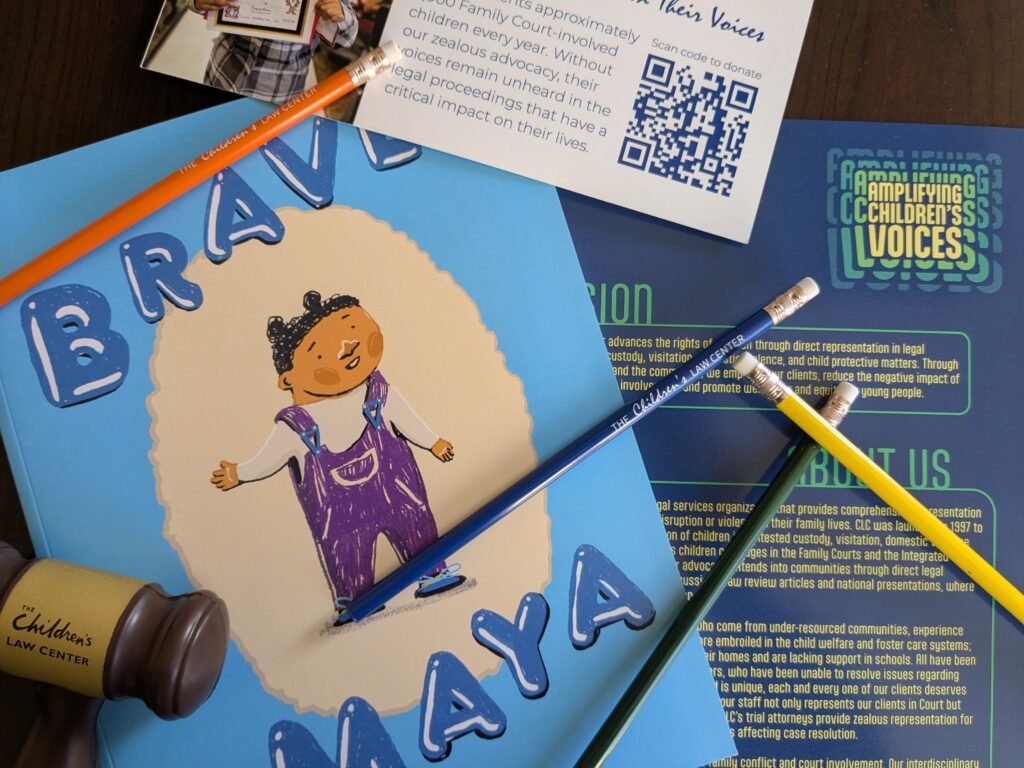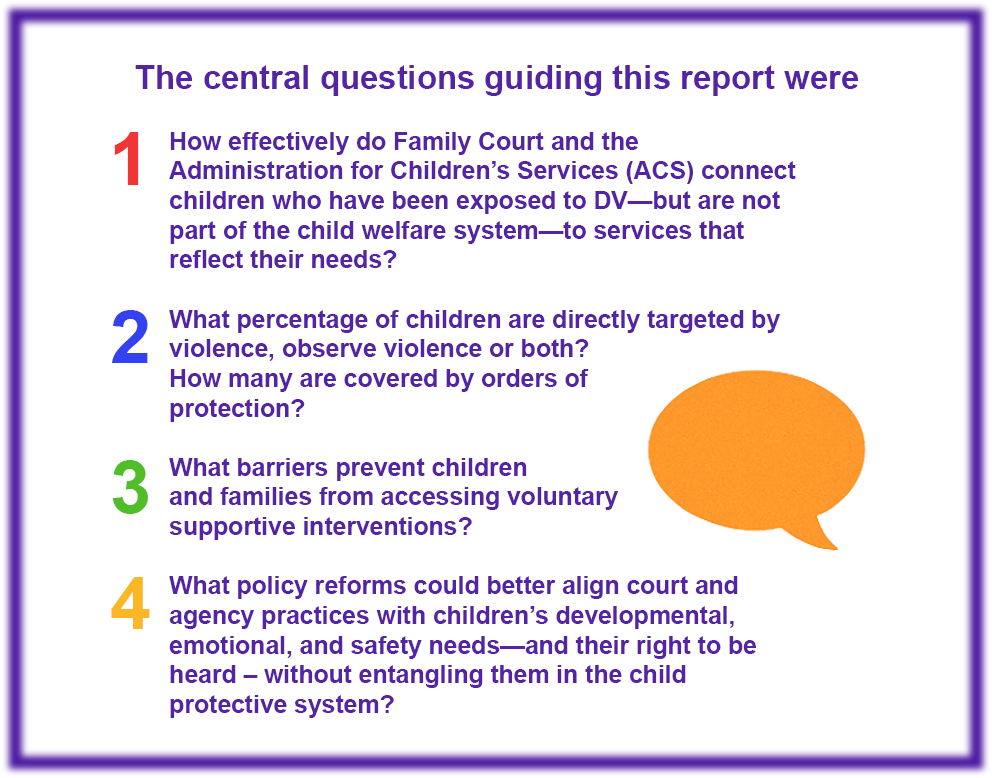
CLC Releases Report on Access to Services for Children Exposed to Domestic Violence
A system that sidelines children’s voices
Despite a high-level of exposure to domestic violence, children in Family Court are not receiving the support they need. The Children’s Law Center (CLC) has documented a lack of therapeutic or rehabilitative resources and services available to children exposed to domestic violence (DV). In a comprehensive review of our cases, we examined how New York City’s Family Courts and child protective systems overlook children whose parents or guardians are in court for custody or order of protection cases. What we found was troubling: current systems rely heavily upon punitive measures, while voluntary preventative or therapeutic support remains grossly insufficient.
It is critical to remember that behind every low service engagement statistic lies a child, a parent, or a family enduring trauma.
As an organization that champions children’s autonomy, CLC recognizes that these systemic gaps not only compound trauma but also limit children’s voices in determining the type of support they receive.
What we set out to learn

A colorful infographic titled “The central questions guiding this report were” displays four questions. The questions are as follows: first, how effectively do Family Court and the Administration for Children’s Services (ACS) connect children who have been exposed to DV–but are not part of the child welfare system–to services that reflect their needs? Second, what percentage of children are directly targeted by violence, observe violence or both? How many are covered by orders of protection? Third, what barriers prevent children and families from accessing voluntary supportive interventions? And fourth, what policy reforms could better align court and agency practices with children’s developmental, emotional, and safety needs–and their right to be heard–without entangling them in the child protective system?
Key findings
Our report came to three conclusions:
- Few children receive support. Despite more than 152,000 Family Court filings, 100,000 neglect and abuse cases investigated by ACS and over 100,000 DV incidents reported by the NYC Mayor’s Office to End Gender-Based Violence (ENDGBV) in 2024, ACS reported only 30,792 direct therapeutic interventions that year. In our own case review, fewer than one-third of families were connected to any services—and the services that were supported often reflected parents’ needs rather than the child’s.
- Referrals depend on the judge. Outside of Integrated Domestic Violence (IDV) courts, which have resource coordinators to manage referrals and follow-up, most Family Court parts lack consistent referral mechanisms. Whether a child receives services often depends on which judge hears the case, creating inequities that deepen instability.
- Systemic barriers block access. Attorneys for Children frequently find there is nowhere to refer children outside of ACS-related programs. Because many resources are ACS-adjacent, families—particularly those who are immigrant, low-income, or from marginalized communities—avoid participation out of fear of agency involvement. Of 53 families enrolled in Able2Adjust’s court-referred parenting service (PEAP), over 40% had DV histories, and nearly half had household incomes exceeding $100,000, far above the city’s median of $81,228. This suggests that access to support is skewed toward families with greater financial security. Our review documents that very few parents from Family Court are referred to programs that could improve their understanding of the impact of their behavior on their children.
What must change?
These findings reveal that the systems designed to protect children routinely fail to offer even the most basic support for healing and stability.
CLC calls for the following reforms:
- Expand trauma-informed services by embedding resource coordinators in all Family Court parts—not only IDV courts—ensuring that children’s perspectives guide referrals.
- Invest in voluntary, child-centered programs outside the child welfare system, reducing fear of punitive oversight and encouraging participation.
- Strengthen interagency coordination so that courts, ACS, and community providers work collaboratively rather than in silos.
- Reframe parent education programs like PEAP as supportive, not punitive, and incorporate children’s input.
- Improve data tracking across agencies to ensure accountability and measure whether children’s preferences are respected in service delivery.
Conclusion: Centering Healing
These recommendations demand more than incremental change. They require a fundamental shift in how New York City conceptualizes child safety in the context of domestic violence—from a model rooted in punishment and monitoring to one centered on healing, stability, and children’s right to autonomy.
